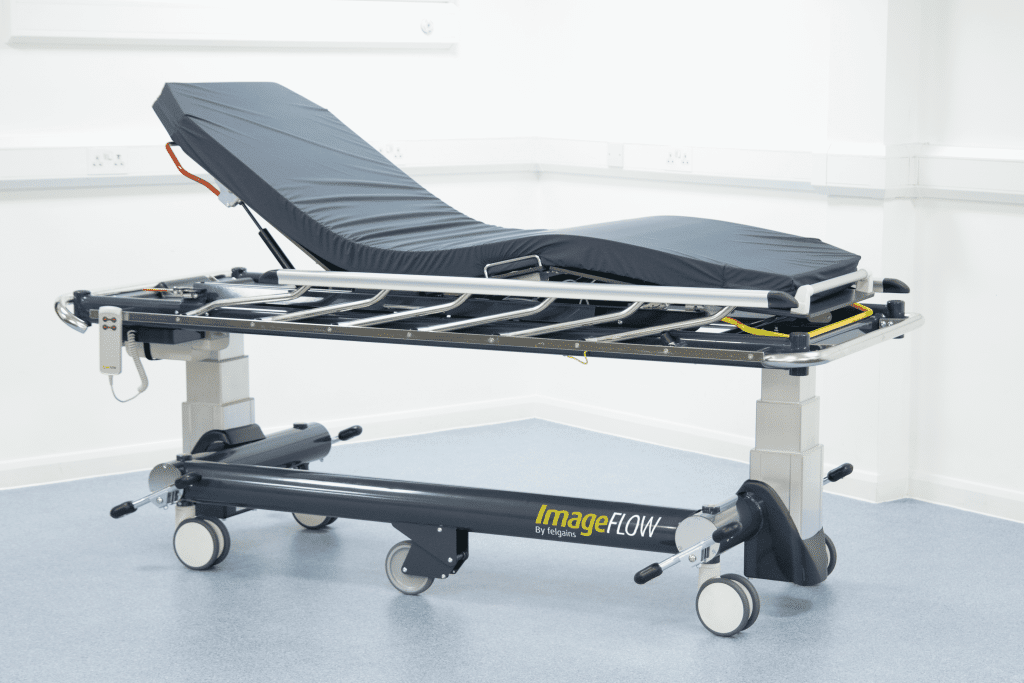How does the Felgains ImageFlow stretcher improve efficiency in imaging departments?
Here at Felgains, we believe that the ImageFlow Stretcher can improve efficiency in your imaging department, and indeed in your hospital as a whole.
Bold claim? Quite possibly, but let’s break it down and see where and how the ImageFlow stretcher can truly make your imaging department safer and more efficient.

Improving patient flow
Improving patient flow through hospitals is a hot topic within the NHS, and rightly so; with admission rates, wait times, and bed occupancy rates all increasing, the pressure on the system is mounting.
A lot of traditional imaging departments use fixed imaging tables for their procedures, resulting in patients having to be transported into the room on a patient stretcher, transferred onto the imaging table, and transferred back off the imaging table onto the stretcher once the procedure is complete.
With the ImageFlow, the need for staff to transfer the patient in the imaging department is completely removed, as the patient can stay on the stretcher during the procedure, as well as for transportation to and from a ward or unit.
This improves the speed at which patients flow through your imaging departments, ultimately reducing wait times and improving patient flow through your hospital.
More efficient procedures
The sliding top of the ImageFlow allows imaging staff to very quickly and accurately position the patient for imaging, without having to manually move the patient or manoeuvre the C-arm camera to the correct position.
By speeding up the process of positioning the patient, the ImageFlow makes imaging procedures faster and more efficient, improving the rate at which patients are seen in the department.
Lower risk of injury to staff
Mobile C-arms are essential tools in most types of imaging departments; as well as being used for diagnostic imaging procedures, they are also used in everyday trauma and orthopaedic surgeries as many procedures are guided by X-Ray fluoroscopy.
However, C-arms are typically very heavy and cumbersome pieces of kit, with most weighing between 200-250kg, making them difficult to move safely, and resulting in a high risk of injury to staff.
The ImageFlow has a sliding top, which enables you to move the patient to the correct position without having to manually move the C-arm camera or patient, completely reducing the risk of injury to staff, and minimising the associated costs and downtime.
Related articles
The 5 best Fluoroscopy and Imaging stretchers in 2023 – a complete comparison
How much do Imaging and Fluoroscopy stretchers cost to buy?
How do patient stretchers improve efficiency and patient flow in hospitals?
Get in touch
Got a question or want to send us a message? Let’s talk.